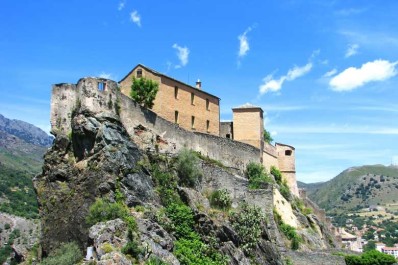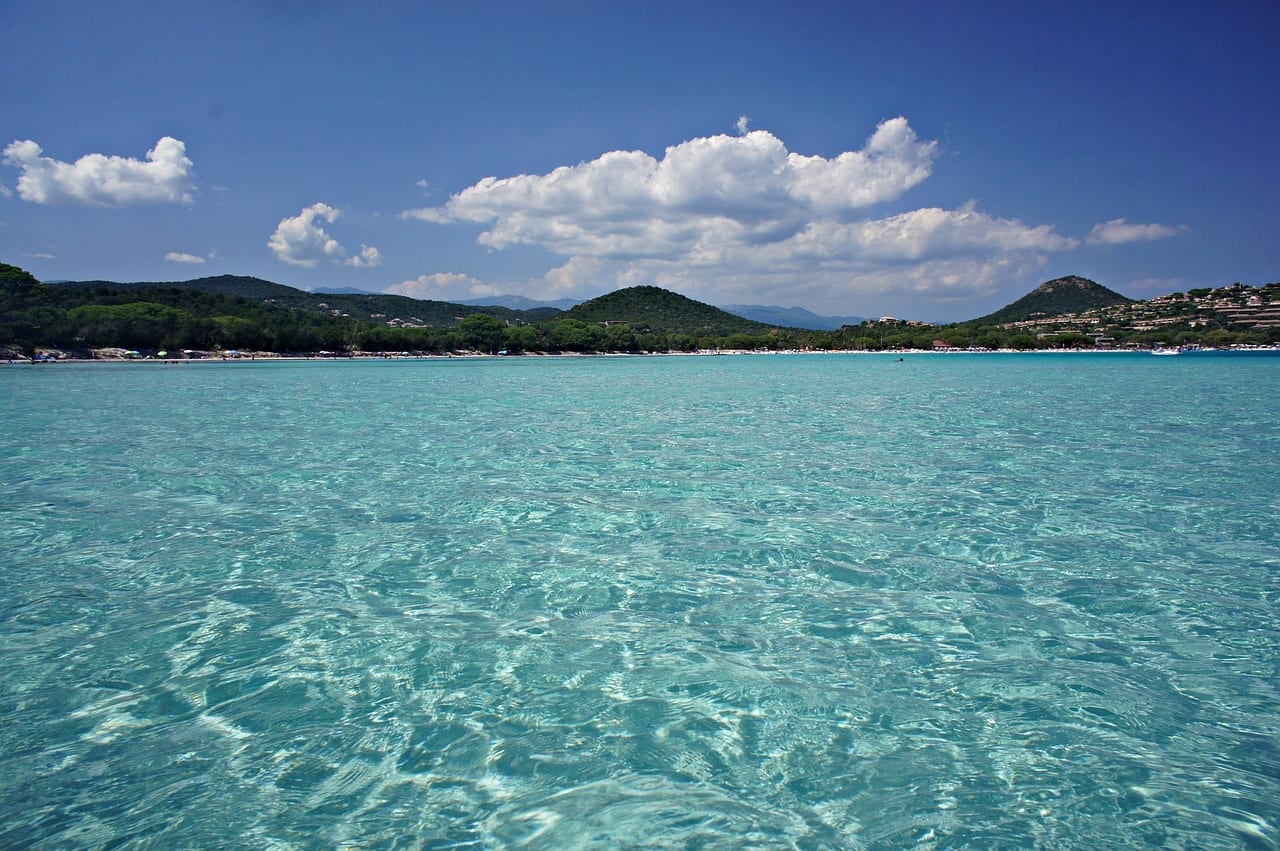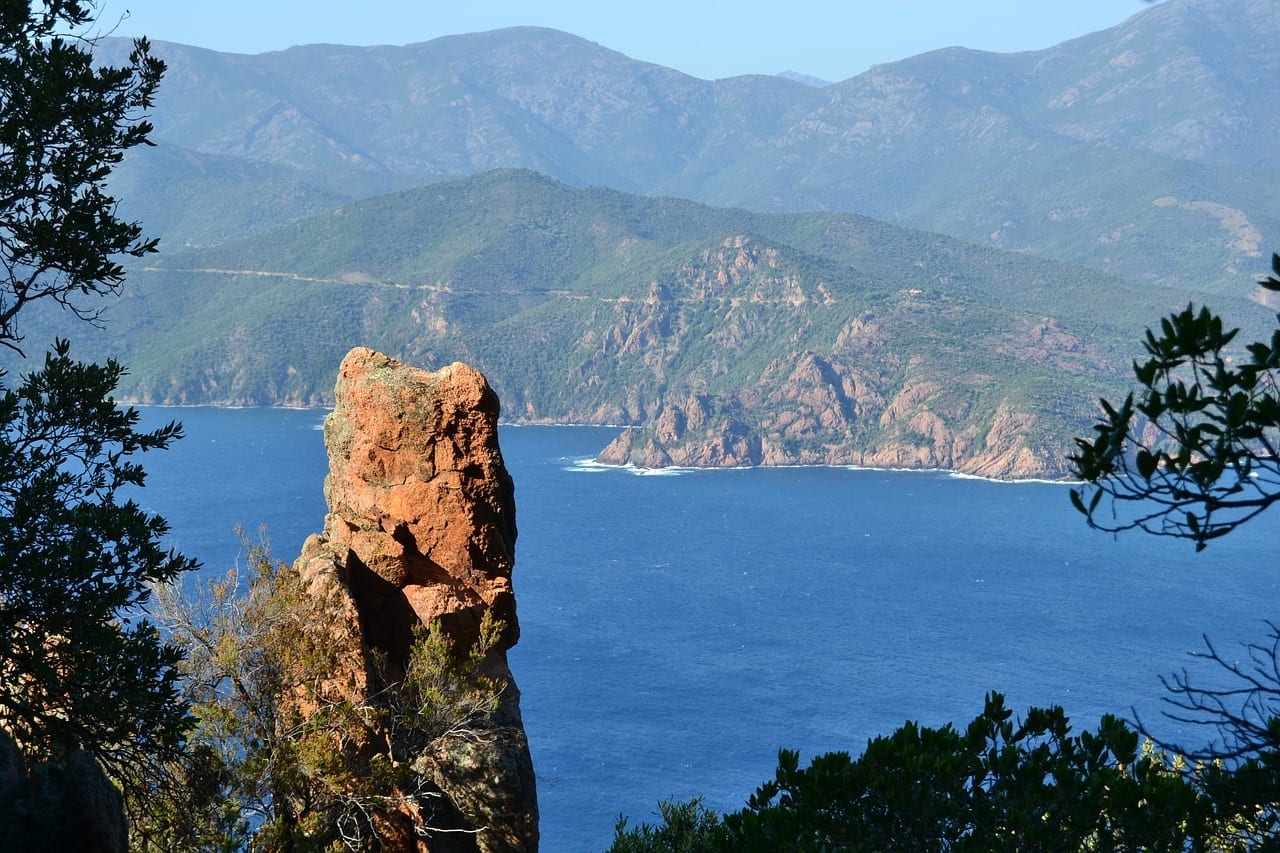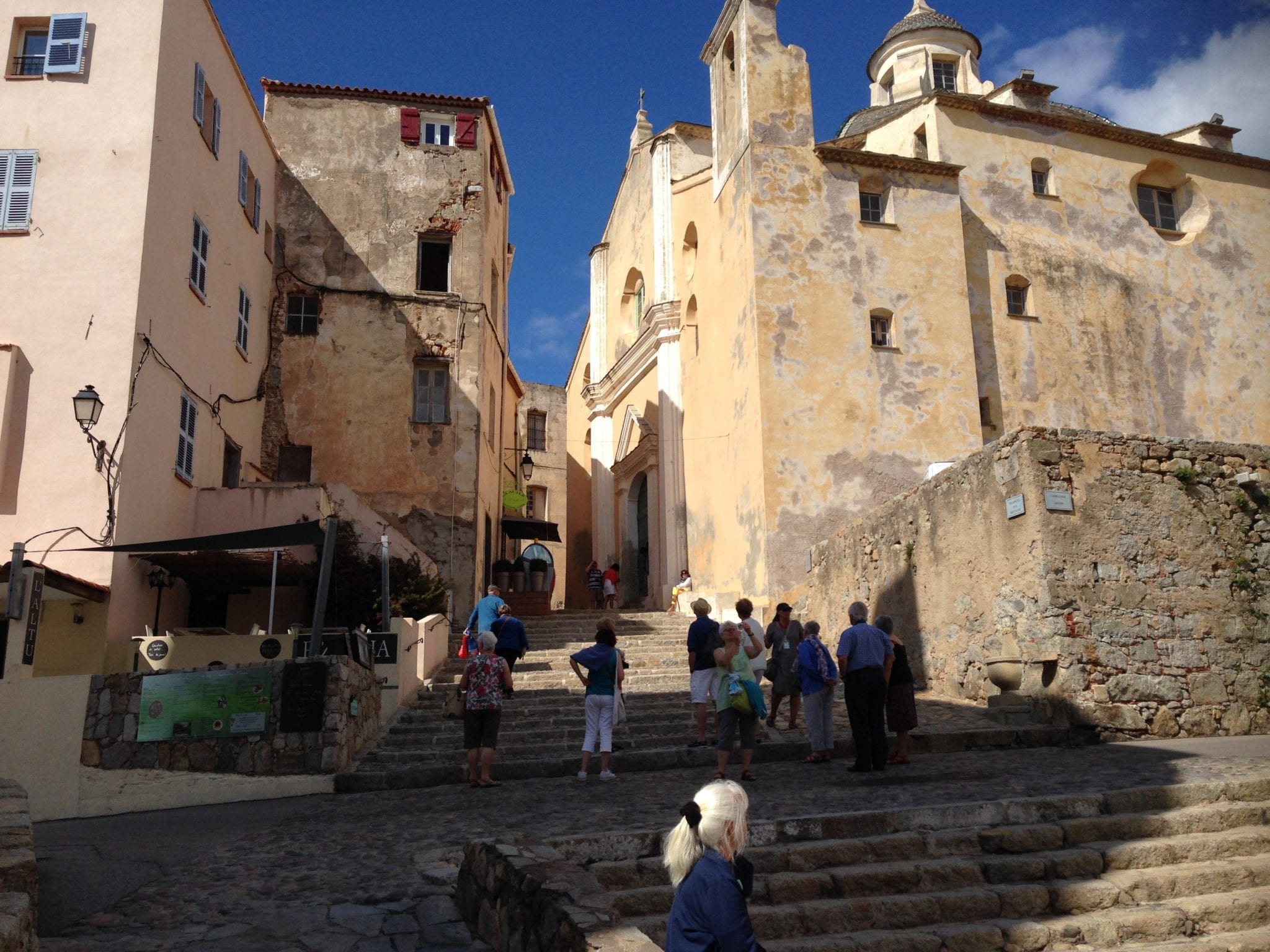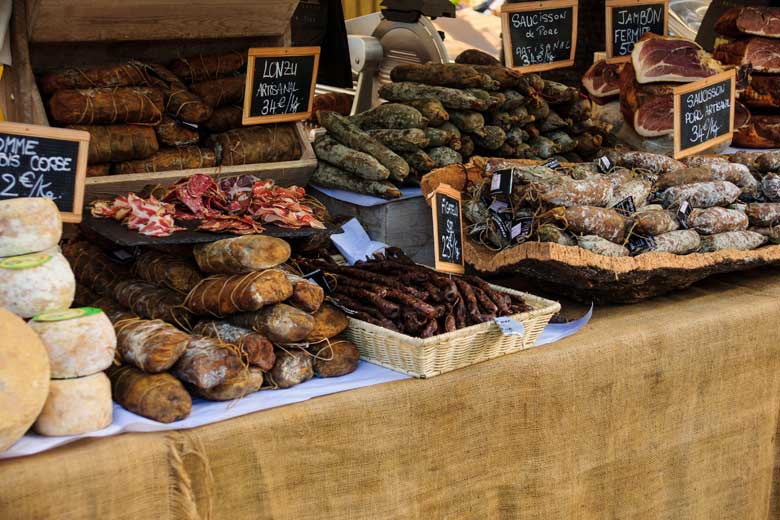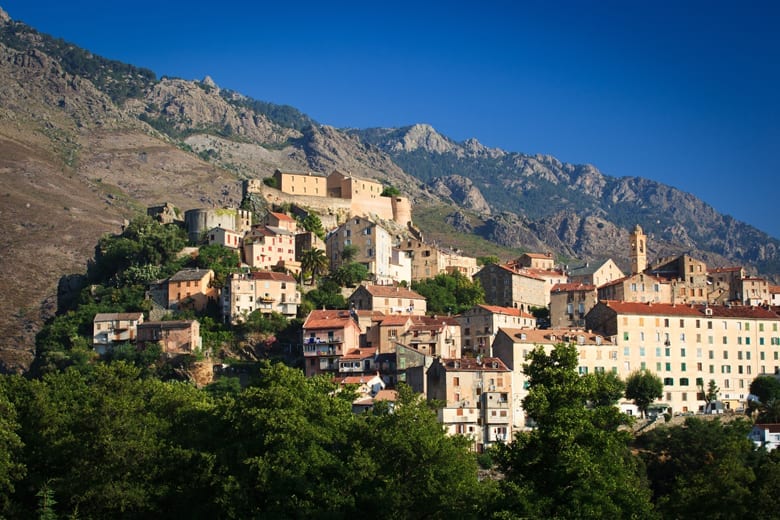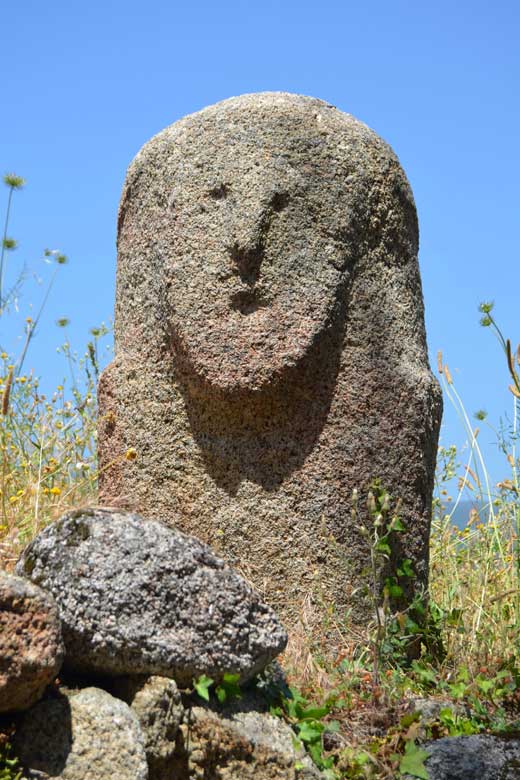Read more about our tour to Corsica by clicking here!
As travelers, we’re always looking for the destination that has it all. Maybe you choose a beach holiday, but there’s not a lot of history. Maybe you find history, but the location is overrun with tourists. It’s hard to find the perfect place to explore, eat, and relax in one trip! We’ve discovered a destination that covers all the bases and is still somewhat undiscovered by Americans: Corsica!
Here are seven reasons we believe travel lovers should not miss Corsica.
- Sunshine. Corsica averages 300 days of sunshine per year. In the month of May, only Marseilles in France averages more hours of sunshine per day than Ajaccio, Corsica’s capital. So, whether you’re exploring the cliffside Genoan citadels or lounging on the beach, sunshine makes it easy to soak in the scenic beauty!
- Incredible scenery. Corsica was created by a series of volcanic eruptions and remains the most mountainous island in the Mediterranean. This makes for some incredible scenery! On the island, you’ll find great hiking with unspoiled vistas, ancient villages nestled in mountain passes, untouched beaches and coves with mountainous backdrops, and ruins of medieval castles among wildflowers and palm trees. Then, there’s the Corsica Regional Nature Park – which contains the UNESCO World Heritage Site of La Scandola Reserve – that occupies one third of the island. It contains stunning red rock formations, jagged and sheer cliffs, grottos, islets and coves that contrast with the azure waters of the Mediterranean.
- Culture. Corsicans have a fierce sense of pride in their own cultural identity, which is a fusion of local traditions and French and Italian cultures. Corsica belonged to the Genoan city state beginning in the 11th century, and the architecture, culture, food, and language all continue to have a very strong Italian ‘flavor’. Like in the Italian islands of Sicily and Sardinia, their communities are like big families and they find loyalty and relationships to be very important. In 1769, Genoa sold Corsica to France. After centuries of being tied to the French government and people, Corsica has inevitably been influenced by the mainland. That being said, Corsicans treasure their traditions and have resisted change and development, so it’s easy to sense the distinct personality of this island. Italian, French, Corsican…what a delicious and beauty combination of cultures!
- Wine and food. Corsica is considered one of the most exciting wine regions in France. Not only are Corsican wines increasingly gaining recognition and awards, they are also very modestly priced. Meanwhile, the food is strongly influenced by French and Italian cuisines. Corsica’s many excellent restaurants all feature locally sourced products: Mediterranean seafood, local herbs from the coastal maquis, herb fed veal, pork and goat, wild boar, and sun-soaked fruits and vegetables such as tomatoes, zucchini, eggplants, peaches, clementines, and figs. Olive oil, chestnuts, and honey are also local treasures, as well as the Corsican cheese like brocciu, which has it’s own AOC (appellation d’origine contrôlée).
- History. If you’re a fan of history, Corsica will keep you busy. To start, Napoleon was born in Ajaccio, where you can visit his childhood home and a very fine museum on his life. The Genoese Towers– all 67 of them– were built as defensive fortresses beginning in the 16th century and still stand at regular intervals along the entire coast. All of the existing villages and cities were built during the Italian period, between the 11th and 18th centuries. But Corsica’s history goes back much farther– to the pre-Roman civilizations – the Greeks, the Carthaginians, and the Etruscans.
- Pre-history. Centuries before the Romans, Corsica was inhabited by advanced civilizations whose sculptures can still be seen today. After enjoying some time by the beach or exploring the hillside villages, head to the region of Sartène, also known as the prehistoric capital of Corsica. Here, you’ll find impressive dolmen and menhir statues. In Filitosa there are archaeological sculptures and tools dating from the Cardial Neolithic (6,000 BC) period, the recent Neolithic, the Bronze Age, and the Iron Age.
- Unspoiled. Although Corsica certainly attracts many tourists– mainly in the summer– the Corsicans are very protective of their island. Families have maintained their roots for generations, preventing the island from being developed by chains and hotels. You can go up into the mountains and see shepherds still minding their flocks; watch farmers making sausages by hand; go for a hike in a protected natural park; or sit at an outdoor café with a Pietra beer and a hunk of home-made bread and raw sheep’s milk cheese and watch life in a tiny village. Or, enjoy a little luxury and dine on dishes prepared by a Michelin starred chef and go to sleep in a five star hotel.
Olde Ipswich Tours travels to Corsica – and it’s neighbor island, Sardinia – in May! Come discover this Mediterranean gem with us. Read the full itinerary and email us at info@ipswichtours.com for more info.

